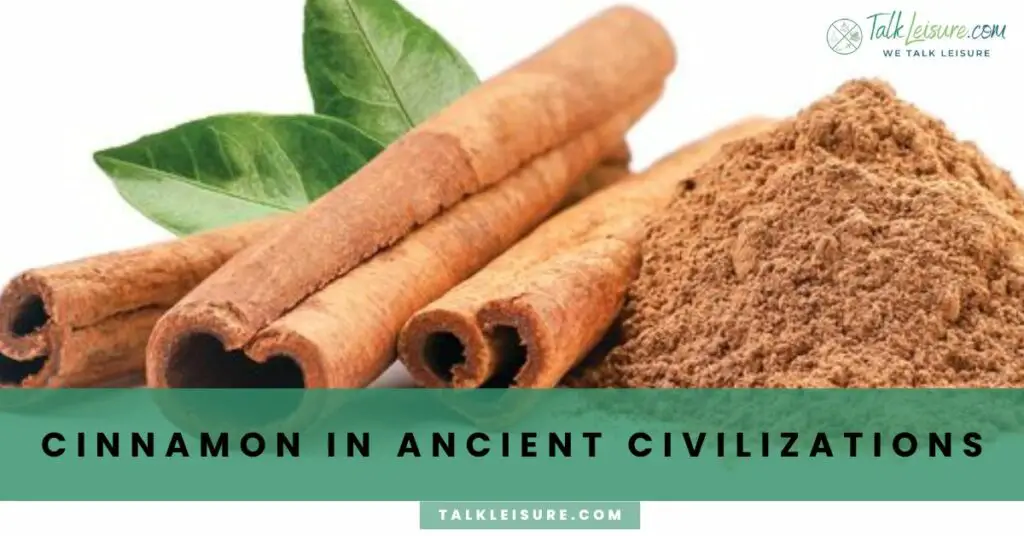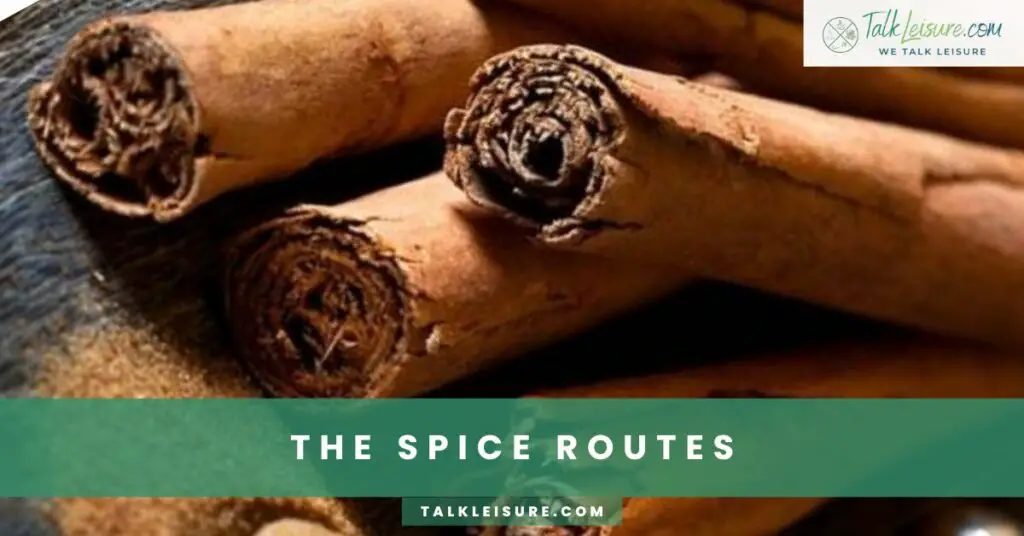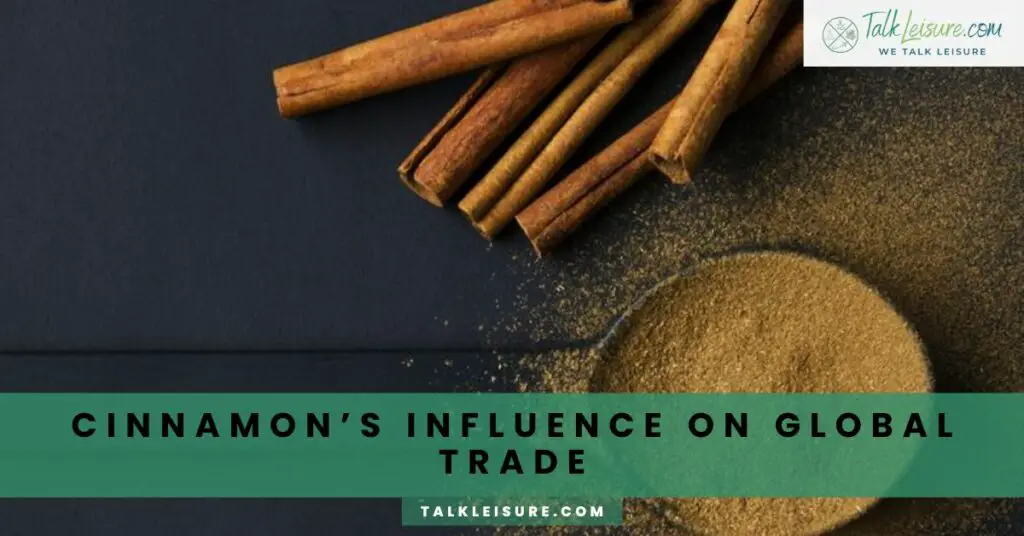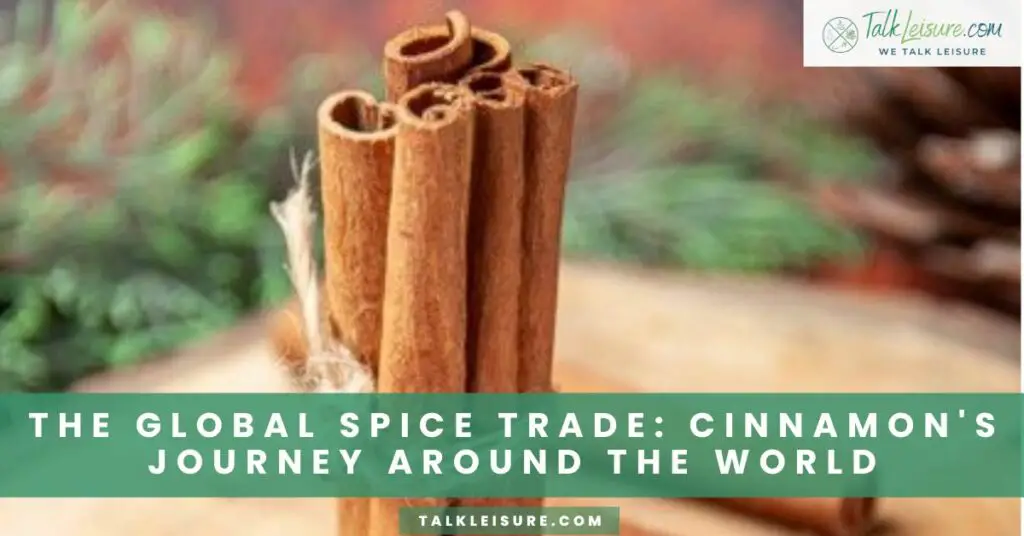Explore the rich history and global impact of cinnamon through the captivating website dedicated to The Global Spice Trade.
Spices have played a crucial role in the culinary traditions of various cultures around the world for centuries.
From adding flavor and aroma to enhancing the color of dishes, spices bring a unique touch to our meals.
The global spice trade has been booming, connecting different regions and creating a diverse range of flavors in cuisines worldwide.
How did the spice trade get so huge?
The Historical Significance of Cinnamon
Cinnamon is one of the most popular and widely used spices, prized for its sweet and warm flavor.
It has a rich history dating back thousands of years, being traded and treasured by several ancient civilizations.
Known for its medicinal properties, cinnamon has been used in traditional Chinese and Ayurvedic practices.
In addition to its culinary and therapeutic uses, cinnamon was also used as a symbol of wealth and power in ancient Egypt.
Now let’s take a closer look at the characteristics and uses of this ancient spice.
The Surprising History of Cinnamon: From Ancient Egypt to Modern Kitchens
Origins of Cinnamon
Cinnamon’s Origins in Sri Lanka
Cinnamon has a long history and its origins can be traced back to the island of Sri Lanka, formerly known as Ceylon.
Sri Lanka is renowned for producing the highest quality cinnamon in the world, known as Ceylon cinnamon.
The country’s favorable climate and fertile soil provide the perfect conditions for growing this fragrant spice.
Other Regions Where Cinnamon is Grown
In addition to Sri Lanka, cinnamon is also cultivated in several other countries, including Indonesia, Vietnam, India, and Madagascar.
Each region has its own unique characteristics that influence the flavor profile of the cinnamon produced.
For example, Indonesian cinnamon, also known as Korintje cinnamon, is known for its strong and spicy flavor, while Vietnamese cinnamon has a sweeter taste.
Harvesting and Processing Cinnamon
Traditional Methods of Harvesting Cinnamon
Traditionally, cinnamon is harvested by skilled workers who carefully strip the bark from the cinnamon tree branches.
This process is labor-intensive and requires great precision to ensure the quality and integrity of the bark.
Once the bark is harvested, it is left to dry in the sun, a process that can take several days. The dried bark is then rolled into cinnamon sticks or ground into powder.
Modern Processes of Cinnamon Production
Modern methods of cinnamon production involve the use of machinery to automate certain aspects of the process.
This helps to increase efficiency and reduce the time required for harvesting and processing. In some cases, chemical treatments may be used to speed up the drying process.
However, these methods can affect the flavor and aroma of the cinnamon.
To ensure high-quality cinnamon, many producers still prefer to use traditional methods, as they believe it preserves the true essence of the spice.
Cinnamon in Ancient Civilizations

Cinnamon’s Role in Ancient Egypt
In ancient Egypt, cinnamon was highly prized and considered a luxury spice.
It was used in embalming rituals and as an offering to the gods.
Egyptians also believed in its medicinal properties, using it as a remedy for various ailments and as a natural fragrance.
Cinnamon was so valuable in ancient Egypt that it was even traded as a form of currency.
Cinnamon’s Presence in Ancient Rome
Ancient Rome also had a strong association with cinnamon.
It was used in cooking and as a fragrance in perfumes and cosmetics.
The Romans believed that cinnamon had powerful medicinal properties and used it to treat digestive issues and respiratory ailments.
Cinnamon was also often included in lavish feasts and banquets, adding a touch of elegance and exotic flavor to their dishes.
The Spice Routes

Exploration of the Spice Routes
In ancient times, the exploration of new lands and the search for valuable spices led to the discovery of new trade routes.
Explorers from different civilizations embarked on epic journeys, braving unknown seas and treacherous terrains to reach the distant lands where these precious spices originated.
These spice routes became important channels of trade and exchange, connecting civilizations and shaping the course of history.
Cinnamon’s Journey Along the Trade Routes
Cinnamon, with its exquisite flavor and aroma, was one of the most sought-after spices during ancient times.
It traveled along the spice routes from its origin in Sri Lanka to reach destinations as far as ancient Egypt and Rome.
Merchants and traders would travel great distances, navigating through vast oceans and deserts, to acquire this valuable commodity.
The journey of cinnamon along the spice routes not only enriched the palates of different civilizations but also fostered cultural exchange and understanding.
The spice routes became vibrant hubs of trade, where goods, ideas, and cultures intertwined and flourished.
Cinnamon’s Demand in Medieval Europe
During the medieval period, cinnamon continued to be highly prized in Europe for its exotic flavor and distinct aroma.
Its demand in the region grew steadily as it became an integral part of traditional cuisines and remedies.
Merchants sought to capitalize on this demand, and the spice routes became even more vital for the trade of cinnamon.
European countries, such as Portugal, Spain, and the Netherlands, were among the key players in the spice trade during this time.
They established colonies and trading posts along the spice routes, further fueling the exchange of goods and ideas between continents.
With the increasing popularity of cinnamon, it found its way into various European recipes, such as mulled wine, spiced cakes, and savory dishes.
It not only added a delightful flavor but also symbolized status and wealth.
The trade of cinnamon and other spices not only had a profound impact on European cuisine but also influenced the social and economic fabric of society.
The spice routes played a significant role in fostering cultural exchange, shaping culinary traditions, and connecting distant civilizations.
Cinnamon’s Influence on Global Trade

During the medieval period, cinnamon held a special place in European culture and cuisine.
Its demand was high, and merchants from countries like Portugal, Spain, and the Netherlands played a key role in the spice trade.
They established trading posts and colonies along the spice routes, allowing for the exchange of goods and ideas across continents.
The popularity of cinnamon in Europe led to its inclusion in various recipes, adding a delightful flavor and symbolizing status and wealth.
It became a staple in mulled wine, spiced cakes, and savory dishes.
The trade of cinnamon, along with other spices, not only influenced the culinary traditions of Europe but also had a significant impact on society.
The spice routes fostered cultural exchange, shaping traditions, and connecting distant civilizations.
Cinnamon’s Journey Around the World
As I reflect on the influence of cinnamon’s journey around the world, I am amazed at its profound impact on global trade and cultural exchange.
The medieval period saw a surge in demand for cinnamon, which prompted European merchants to venture out on spice trade routes.
These trading expeditions not only fueled the economy but also brought people from different continents together.
It’s fascinating to think that the humble cinnamon spice played a significant role in fostering cultural exchange and shaping culinary traditions.
Moreover, cinnamon’s popularity in European cuisine added a delightful flavor to various recipes and became a symbol of status and wealth.
It’s incredible how a simple ingredient could carry such weight and become an integral part of mulled wine, spiced cakes, and savory dishes.
Overall, the trade of cinnamon and other spices has left an indelible mark on society, connecting distant civilizations and shaping traditions.
It’s a testament to the power of global trade and the exchange of goods and ideas.
So the next time you sprinkle cinnamon on your favorite dish, remember the long and fascinating journey this spice has made to reach your plate.
Frequently Asked Questions
Why is cinnamon’s journey around the world significant?
Cinnamon’s journey around the world carries great significance as it played a pivotal role in global trade and cultural exchange. The demand for cinnamon during the medieval period led to European merchants embarking on spice trade routes, connecting different continents and fostering relationships between distant civilizations.
How did cinnamon influence culinary traditions?
Cinnamon’s popularity in European cuisine added a delightful flavor to various recipes and became a symbol of status and wealth. It became an integral part of mulled wine, spiced cakes, and savory dishes, shaping culinary traditions and enhancing the culinary experiences of people across the globe.
What is the impact of the trade of cinnamon and spices on society?
The trade of cinnamon and spices left an indelible mark on society by connecting distant civilizations and shaping traditions. It exemplifies the power of global trade and the exchange of goods and ideas, showcasing how even a simple ingredient can have a profound influence on cultural exchange and economic growth.
How can we appreciate the journey of cinnamon today?
By sprinkling cinnamon on our favorite dishes, we can appreciate the long and fascinating journey this spice has made to reach our plate. It serves as a reminder of the historical significance of the global spice trade and the power of connection through trade and exploration.
Best Wishes!











